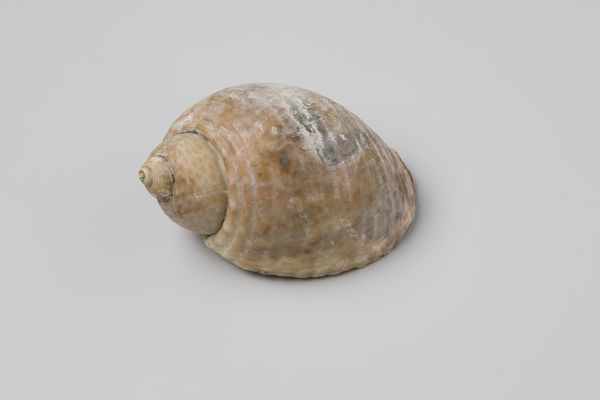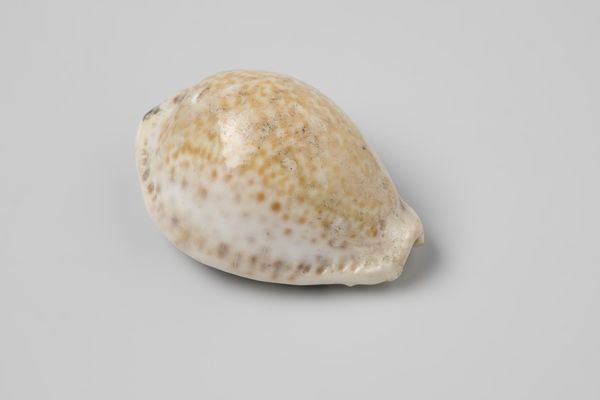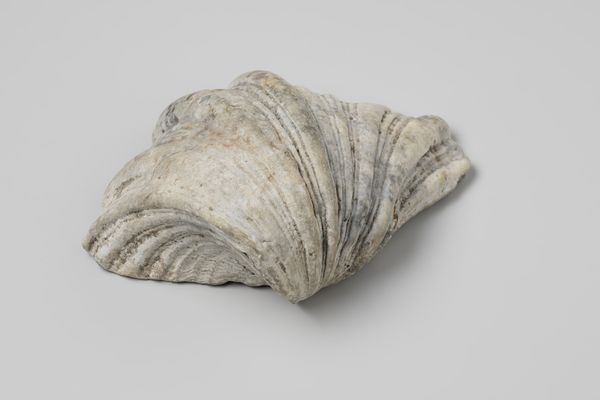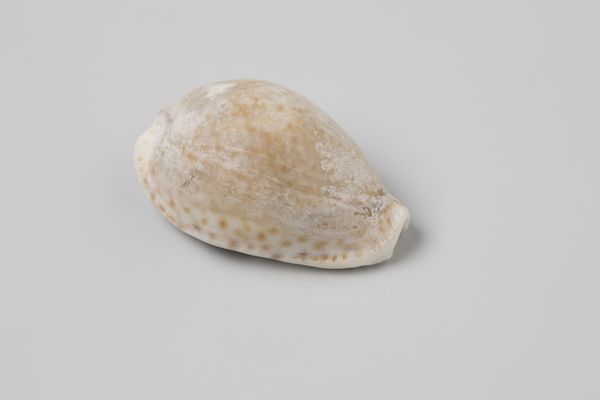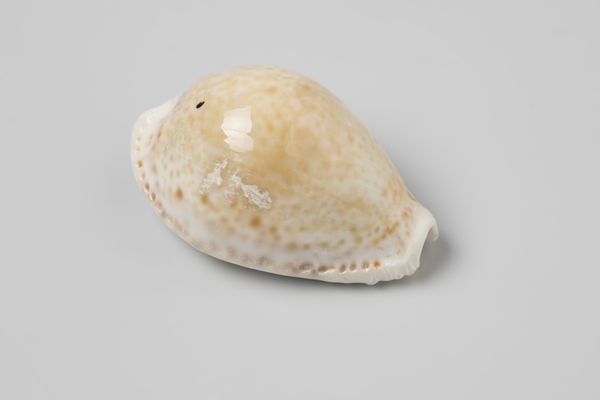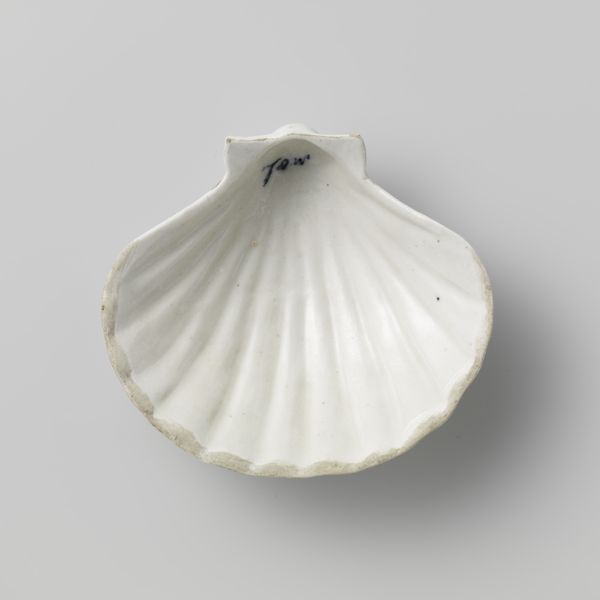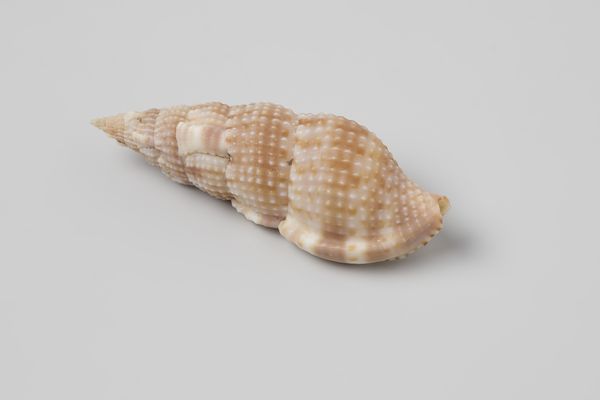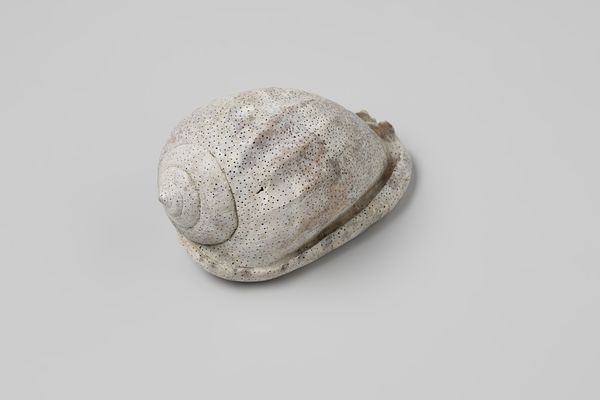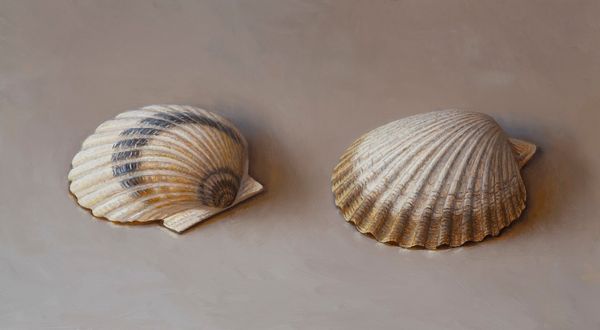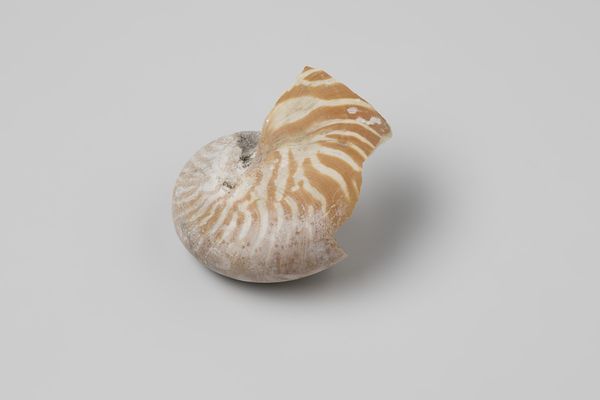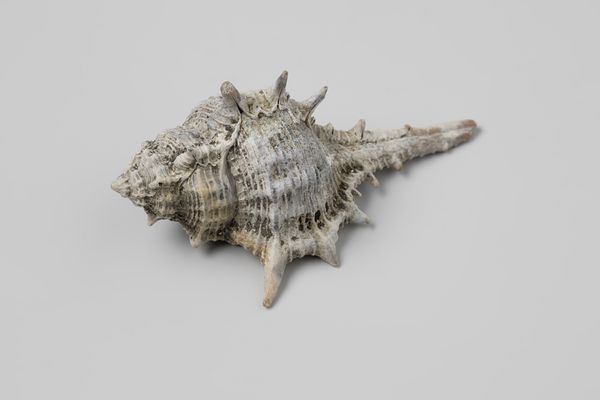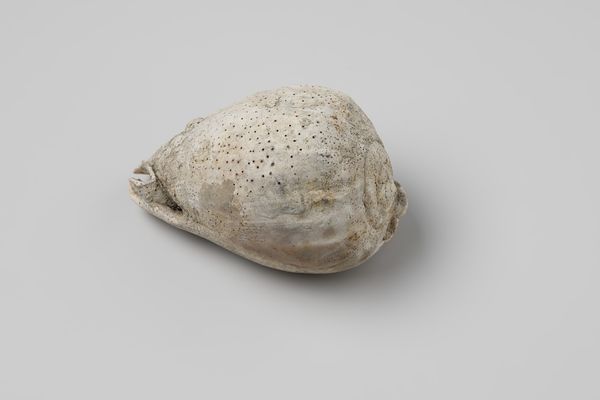
Hydatina physis shell from the wreck of the Dutch East India ship Witte Leeuw before 1613
0:00
0:00
#
organic
Dimensions: length 4.6 cm, width 2.7 cm, height 2.5 cm
Copyright: Rijks Museum: Open Domain
This is a Hydatina physis shell recovered from the wreck of the Dutch East India ship Witte Leeuw. The shell's surface is adorned with spiral bands, which can be viewed as symbols of the cyclical nature of life and the continuous flow of time. We find echoes of this spiral motif across cultures and centuries, from the Celtic triskeles to the coiled serpents of ancient Greece. In each instance, the spiral embodies notions of growth, evolution, and the eternal dance of creation and destruction. Think of how the spiral appears in the labyrinth, which represents the convolutions of the human psyche, or how the spiral appears in the caduceus, which represents trade, eloquence, trickery, and negotiation. The enduring presence of the spiral in human expression suggests a deep-seated resonance within the collective unconscious. It serves as a potent reminder of the interconnectedness of all things and the ever-turning wheel of existence, a psychological and cultural force that engages us on a primal level. The spiral is not a linear progression, but a cyclical journey, and has resurfaced, evolved, and acquired new significance across time.
Comments
No comments
Be the first to comment and join the conversation on the ultimate creative platform.
